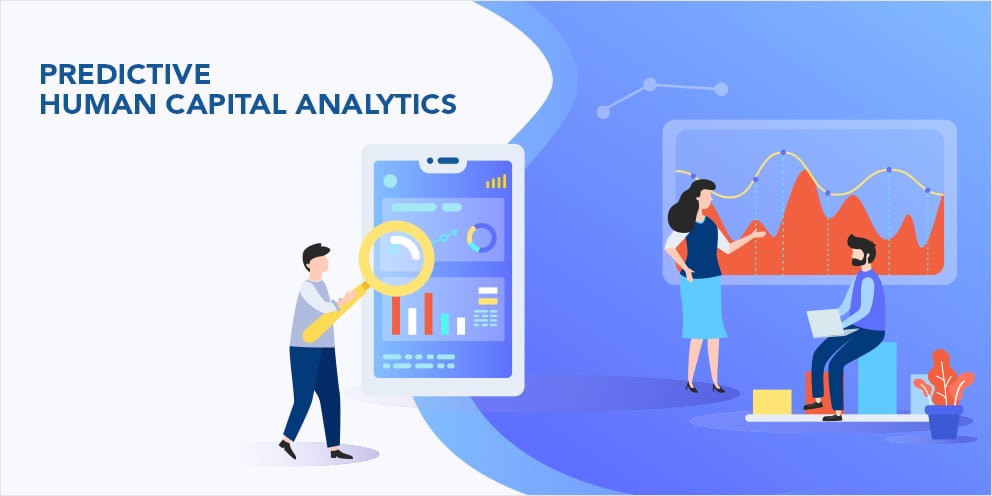
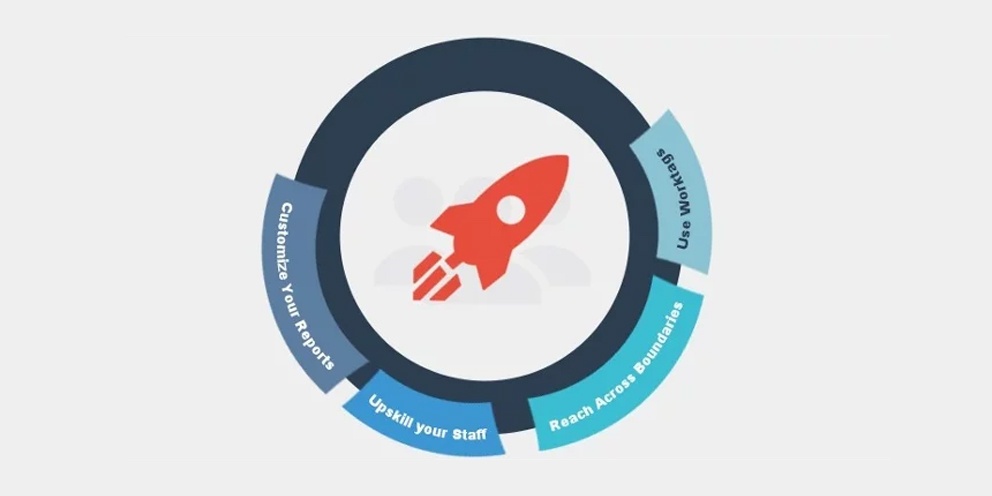
After years of hype about employee engagement with little progress to show for it, we understand why some might regard the noise about human capital analytics to be hype. In addition to that skepticism, lack of progress in people analytics is reinforcing the perception. In spite of years of urging by industry analysts and thought leaders, HR has made little progress, but promising signs are emerging.
Deloitte’s 2016 report is more optimistic, citing a doubling in the percentage of companies capable of developing predictive models, from 4 percent to 8 percent. Their new conclusion is that HR is “turning the corner.” CEOs are reporting better results from HR.
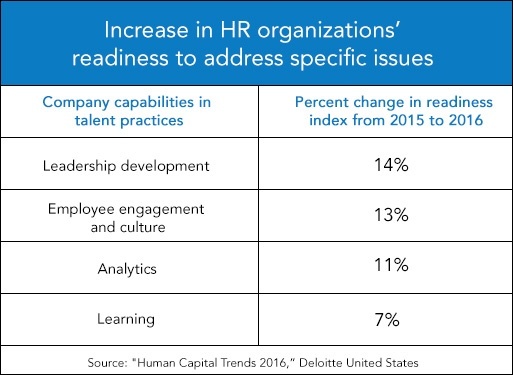
When people ask us about the future of predictive human capital analytics, we say it is the next logical progression in the way we do business. HR leaders have been making predictions based on past and current data for as long as we can remember, but the traditional methods of predictions have been benchmarking, “best practices,” gut instinct, and hope. That is no longer good enough. The competition for people is demanding better tools.
HR is on the cusp of massive change. Adoption of people analytics is gaining momentum, and it won’t be long before human capital analytics becomes a required fundamental competency.
Four primary factors have been holding HR practitioners back.
Siloed thinking -- the flawed premise that HR does “people stuff” and everyone else does business. It manifests itself when HR leaders can speak of outcomes only in trendy or “feeling” terms. We have talked with many HR practitioners who describe themselves as “a people person, not a numbers person.” That concept is beginning to change.
Lack of capability. People analytics is a relatively young concept; expertise has been scarce, but the number of analysts and consultants is growing to meet the demand.
Technology. Robust analytical tools have historically been expensive and hard to use, but now human capital software vendors are packaging user-friendly tools with their platforms. However, the tools they provide are not unique to industries and are not designed for predictive modeling.
Misdirected focus. HR has been focused on proving its value with internal efficiency and effectiveness measures rather than contributing value by impacting the business. That will change as more and more CEOs demand to know how their investment in people pays off.
Modern CEOs realize that people are their only sustainable competitive advantage. The demand for people analytics will continue to grow, and HR will need to hustle to catch up.
By themselves, machines, materials, processes, and information do nothing. People create value when they interact with those things and with other people. If people are 70% of your cost and all of your value, why would it not be a fundamental business practice to apply the power of analytics to maximize their net contribution?
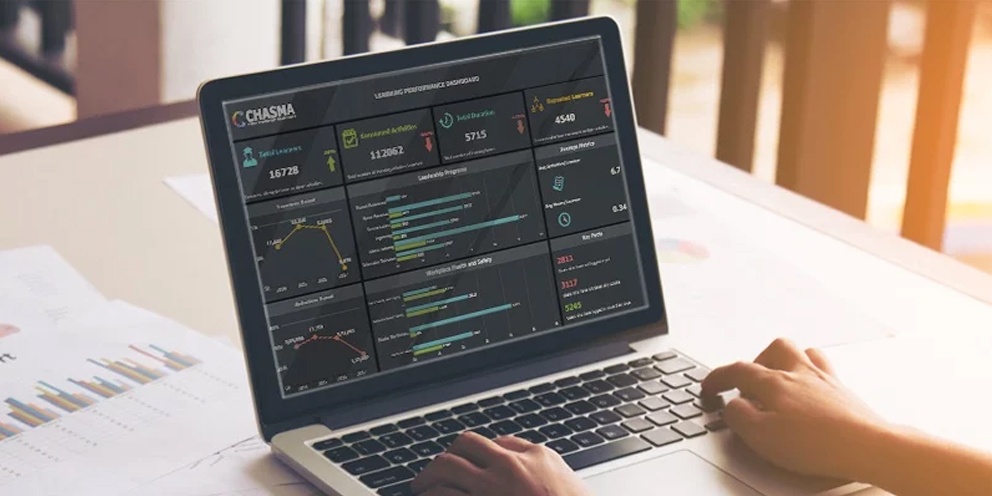
In the early years of our new century, we were working in talent management software companies, implementing integrated platforms for dozens of medium to large business. For the more forward-thinking companies, many of them global household names, the ultimate holy grail was a succession planning application.
Supported by an applicant tracking system, performance and goal management, employee development, and integrated compensation planning, the succession applications comprised a database and talent dashboard that brought together all of the history, performance, and learning information about employees into an interactive organization chart.
All based on bad data.
To understand why we call it bad data, let’s follow the journey of the data from beginning to end. Start with the recruiting process, where hiring managers made their decisions based on their best judgment of a candidate’s ability to do the job. The evidence a manager used was a finely crafted resume, a manual screening process, and a series of interviews.
Then, managers set performance objectives based on their perception of how the new employee’s job supported organizational goals. At the end of the year, the manager exercised “best judgment” to rate employees on their performance, and awarded merit raises and bonuses based on that judgment. Thousands of companies developed rating models intended to make evaluations more objective, but managers’ judgment decided the difference between evaluative adverbs like often, frequently, always, and sometimes.
The managers created development plans for employees based on their assessment of what skills and competencies the employee needed to develop, and then evaluated, again based on their best judgment, how well the employee had progressed.
Then, as the final stroke, the manager used their experience to estimate the employee’s potential for growth and advancement so the dashboard could display the employee’s position on the famous 9-box. Only then, after the intervening gut decisions, were the top contenders evaluated using professional, objective assessments. To be fair, we must say that the best companies used assessments early in the process, but most did not.
The problem is in our humanity.
Humans do not make decisions with their rational minds. We make hundreds of decisions every day, originating in the emotional centers of our brains, then we use our rational minds to justify them. Even when we work through the process of gathering information, quantifying costs and benefits, using every possible data source we can find, our biases guide our decisions.[1]
Let’s look at the evidence. In Harvard Business Review, Marcus Buckingham cited three studies where the effect of rater bias was well over half of the rating. In the Applied Psychology study, 51% of the variance in ratings was determined by bosses’ idiosyncratic biases, almost twice the effect of actual performance.

The result is a growing movement to change the way we assess performance and a small but growing dependence on harnessing the enormous amounts of data we generate to make better decisions.
The digital transformation of the past fifteen years has wrought big changes. Now we have validated assessments during the recruiting process, performance analytics to support evaluation decisions, and, in the most progressive companies, profiles based on predictive analytics.
Well designed pre-employment assessments work.We have evidence that algorithms make better hiring decisions than people. We have seen the positive impact on personal development a well-designed assessment can bring to an individual, and that identifying high potential employees and developing them has a positive impact on organizational performance.
That doesn’t mean you need to bet the business on an analytics function. If you can afford to invest in a team of data scientists, a state-of-the-art analytics engine, and a massive data warehouse, do it. For most, there are less risky alternatives.
Our recommendation is to start from where you are with the data and tools you have and work on the problem of the leadership pipeline. We will write more about how to get started over the next few weeks.
If you have questions about getting started or implementing analytics in your organization, call us at +1 855-978-6816 or use the comments section below. We will be glad to share our knowledge.
References:
1. Haidt, Jonathan. The Righteous Mind: Why Good People Are Divided by Politics and Religion. New York: Pantheon Books, 2012.
2. Scullen, Steven E., Michael K. Mount, and Maynard Goff. "Understanding the Latent Structure of Job Performance Ratings." Journal of Applied Psychology 85, no. 6 (2000): 965. doi:10.1037/0021-9010.85.6.956.
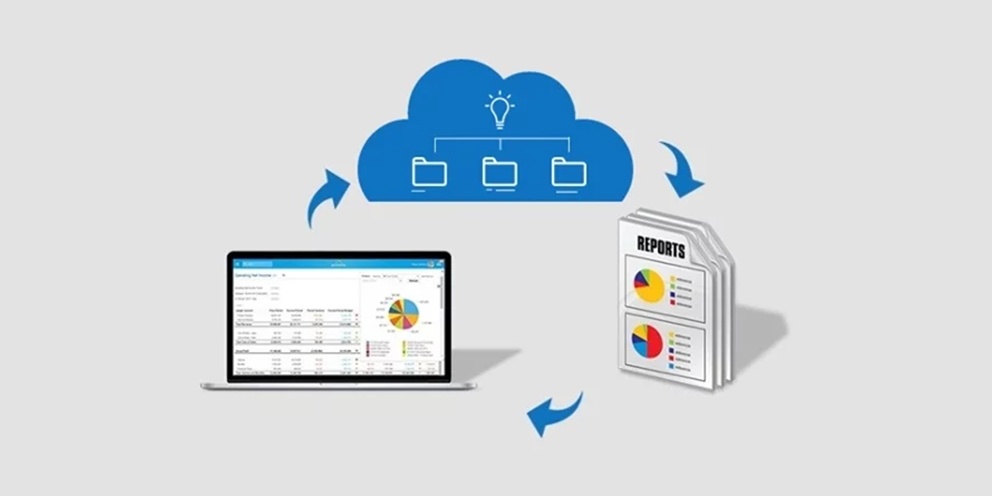
We often read that companies have poured billions of dollars into employee engagement programs over the past few years with little to show for the effort. Every day we get an offer for another webinar, white paper, research study, or blog articles about employee engagement.
With human capital analytics now becoming mainstream, the clamor has increased. An entire industry sprang up around employee engagement, to the point that it seems impossible for a CHRO to know where to start. We have technology vendors, assessment providers, mood monitoring systems, work management systems, and a wealth of local, national, and global consultants. And let us not forget the new disciplines like Engagement Diagnostics Specialist.
We are not saying well-implemented engagement programs do not work, or that those of us in the business don’t provide valuable service. Dozens of case studies prove otherwise. Good programs succeed, but it takes strategy, discipline, and a road map.
Josh Bersin and his team have created an Employee Engagement Vendor Market Navigator to help CHROs navigate the provider maze. The model takes work to fathom, but it helps us understand the contributions each of the specialties and platforms make. It maps the resources and expertise needed to enhance productivity, monitor organizational health, and effect change.
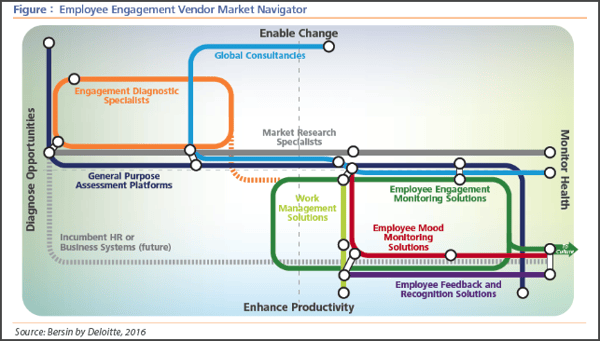
All the resources Bersin recommends would be helpful, and might be doable if these factors are in your favor:
For the rest of us, we recommend a more measured approach. We agree with Bersin that the place to start is with a strategy, but a CHRO can’t go down the analytics road alone.
First, stop trying to chase employee engagement. To many people, employee engagement is HR jargon. Engagement is not a business outcome, and a direct impact on the income statement is hard to determine. You will not get support for what business leaders perceive to be a nebulous idea. Follow the money trail to build credibility.
Assuming you need to overcome internal resistance, the place to start is with the right alliances. Your three new best friends should be Marketing, Finance, and a business leader with a problem.
If anyone knows analytics, Marketing does. They have been studying consumer behavior for years, and can predict who will buy what and when with uncanny accuracy. The predictive analytics they use will be much like what you will use to predict employee behavior.
The CFO has been using analytics to predict the value of investments in the company for decades. This initiative is an opportunity to add value to the business on the CFO’s terms.
Most business leaders have financial objectives they must meet, usually expressed as key performance indicators, (KPIs). For example, if you can predict with accuracy which candidates will be better sales people, you can improve sales, reduce attrition, or both. A large medical device company cut sales attrition by 1 percent and saved $30 million in turnover costs.
If you can help a business leader solve a problem that results in better numbers on the balance sheet, you are well on our way to changing the way HR does business. In the best case, that business leader will command the resources necessary to get the work done.
Every situation is different, but we can recommend a general framework for your analytics project.
A small success that affects financial results will lay the groundwork to help you improve and enlarge on your efforts. In time, predictive analytics will be the foundation for more informed decision making and a more productive workforce.

Human resources are vital constituents for every organization. In today’s age of competition and growth, it’s become crucial to view people as assets rather than “costs” to the organization. In a fast paced world , skill requirements are constantly changing with rapid advancement of technology and regulations. Human capital dynamics demand that we apply analytics to reconfigure our workforce scenarios and predict our next best move or else we lose competitive advantage and market share. Human Resources (HR) analytics refers to the integration of relevant HR statistics from different sources, analyzing this captured data, and ultimately establishing the predictive models based on business requirements and funnel the available data into the respective model and utilize it towards organization performance.
Significant Challenges faced by HR
Every business function has to make some or other changes such as reduce costs, increase revenue etc to stay profitable and grow. Some of the biggest challenges faced by HR teams and other key executives in maintaining growth rate and managing human capital across various segments include :
Although financial capital (cash) and economic capital are the lifeblood of a business, it is human capital that apply logical skills and leverage intangible assets to drive business performance. Companies are exploring new opportunities for utilizing the ever-increasing volumes of data from various segments and affixing it with strategical approach which ensures that analytics and its outcomes are aligned with business objectives. Predictive analytics for HR is based on establishing an analytics-driven statistical relationship between the objectives of HR function and fruitful resources available within an organization.
Key segments where Predictive Analytics Can enhance Value for HR domain include :
The Leveraging effect
The key to realize maximum benefits from the Human capital data lies in aligning tying the different data sources to strategic business objectives. Leveraging data from different sources along with application of predictive models helps in projecting the right picture clarifying holistic analysis of the organization. Blending of statistical information from government and other sources along with organizational data provides a clear ground for effective planning and meeting both short term and long term goals of the organization.
To play a more strategic role in the organization, HR teams need to move ahead from operational analytics to predictive competence. Instead of generating reports for operational effectivity, it needs to embrace advanced predictive algorithms that support strategic organizational vision and objectives.
Predictive analytics helps organizations manage monetary formalities while developing a high performing workforce. Predictive analytics might be uncharted realm for HR domain, therefore to fully capitalize on analytics expertise, HR personnel need to collaborate with other business domains to understand how can they leverage existing data to create sustainability for brand and value. By doing so, HR departments can boost superlative employee experiences which can aid to achieve projected long-term goals with desired optimum efficiency.
Pixentia is an enthusiastic team of individuals, fervent to make lives simpler through effective use of technology. Our mission is to implement solutions that drive business results. Know more insights from our thoughts and experience.

If you read our recent article on HR big data, you know you can analyze your data without advanced analytical tools to discover connections, relationships, correlations, and causations. You may have already started on a test project to affect a business metric by applying your conclusions.
We need analytics to give us insight into the probability of future events and trends. In Predictive Analytics for Human Resources, Jac Fitz-Enz and John Mattox describe three levels of human capital analytics beyond simple reporting.
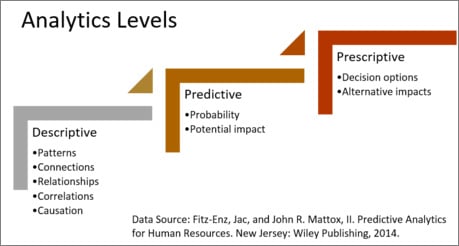
In a previous article, we described how to use descriptive analytics to develop a test case in which we studied trends and relationships to see how we might affect a business outcome. The time you spent in exploring relationships will guide your thinking in the next step in your path.
The next level in analytics uses predictive analytics to forecast results. The primary tool of predictive analytics is regression analysis.
Regression analysis has been with us for two hundred years. In its simplest form, linear regression, it compares two known variables to determine their relationship. In more complex forms, it can compare many variables and even functions with infinite dimensions.
Regression analysis gives us correlations -- how variables are related, and probability -- the likelihood that patterns will repeat. In marketing, we use the techniques to tell us who will be most likely to buy a product (and when, where, and why) so we can target marketing to those consumers.
Many organizations are using regression techniques to determine which candidates for employment will succeed. We find that statistical models are better at hiring decisionsing decisions than manager judgment, and we can create predictive models to tell us which employees are most likely to leave.
Many possibilities come to mind for using analysis of historical trends to predict outcomes. For example:
What makes predictive analytics work is the underlying assumptions. A false assumption can render a regression model invalid, and the assumptions that were true last year may not be valid today. Assumptions can also be invalid if we don’t include the right variables.
Good data analysts know how to test for the validity of your assumptions, and analytical software has tools for testing them. What is important for business leaders to understand is that invalid assumptions will lead you astray.
We recommend a few guidelines to follow to make sure your early efforts are a success.
Using predictive analytics will help you make better decisions and boost your chances of funding your projects. More important, your success will build your credibility with business leaders.
Recommended Reading:
Fitz-Enz, Jac, and John R. Mattox, II. Predictive Analytics for Human Resources. New Jersey: Wiley Publishing, 2014.
Davenport, Tom. "A Predictive Analytics Primer." Harvard Business Review. September 02, 2014.
Pixentia is a full-service technology company dedicated to helping clients solve business problems, improve the capability of their people, and achieve better results.